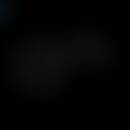Synonym(s)
HistoryThis section has been translated automatically.
The Ordinance (Bundesrechtsverordnung) on agents for tattooing including certain comparable substances and preparations contains a list of substances and dyes which may not be used for tattooing in Germany. Listed are in particular azo dyes, which are also often used in paints for the automotive industry. The regulation was published in the Federal Law Gazette on 27 November 2008; the regulation came into force on 1 May 2009. According to this ordinance, according to § 3, tattooing agents may only be marketed commercially if the following information is provided:
- the indication "agent for tattooing", "tattoo colour" or "tattoo colour
- the name or a description of the product and its use which is customary in the general public's perception and which enables the consumer to recognise the nature of the product and distinguish it from products liable to be confused.
- the number of the production batch or a mark enabling the production to be identified
- the name and address of the manufacturer or a person responsible for placing the product on the market
- the date of minimum durability: The date of minimum durability is the date up to which the product will continue to fulfil its original function if the unopened package is properly stored. It must be indicated in clear text with the words "best before ...", indicating the month and year.
- the period of use after opening the product
- the list of ingredients in descending order of weight at the time of manufacture.
Furthermore, §1 of this regulation defines substances (dyes) which must not be used as tattooing agents. These are substances which are listed in Regulation (EC) No. 1223/2009 of the European Parliament and of the Council of 30 November 2009 on cosmetic products (OJ L 342, 22.12.2009, p. 59) and which were last amended by Regulation (EU) 2015/1298 of 28 July 2015 (OJ L 199, 29.7.2015, p. 22). For example, azo dyes are prohibited which are split by reductive cleavage of one or more azo groups into one or more of the amines listed below. Also prohibited are the dyes listed below, p-phenylenediamine and its p-phenylenediamine hydrochloride or p-phenylenediamine sulphate (CI 76060).
LiteratureThis section has been translated automatically.
- https://www.gesetze-im-internet.de/t_tov/TätoV.pdf
TablesThis section has been translated automatically.
List of amines resulting from the reductive cleavage of azodyes
- Biphenyl-4-ylamine (4-aminobiphenyl; xenylamine) CAS number: 92-67-1
- Benzidine CAS number: 92-87-5
- 1 4-chloro-o-o-toluidine CAS number: 95-69-2
- Naphthylamine CAS number: 91-59-8
- o-Aminoazotoluene (4-amino-2',3-dimethylazobenzene; 4-o-Tolylazo-o-o-toluidine) CAS number: 97-56-3
- 4-chloroaniline CAS number: 106-47-8
- 4-Methoxy-m-phenylenediamine (2,4-diaminoanisole) CAS number: 615-05-4
- 4,4'-methylenedianiline (4,4'-diaminodiphenylmethane) CAS number: 101-77-9
- 3,3'-dichlorobenzidine (3,3'-dichlorobiphenyl-4,4'-ylenediamine) CAS number: 91-94-1
- 3,3'-Dimethoxybenzidine o-Dianisidine CAS number: 119-90-4
- 3,3'-dimethylbenzidine (4,4'-bi-o-toluidine) CAS number: 119-93-7
- 4,4'-methylenedi-o-toluidine (3,3'-dimethyl-4,4'-diaminodiphenylmethane) CAS number: 838-88-0
- 6-methoxy-m-toluidine (p-cresidine) CAS number: 120-71-8
- 4,4'-methylene-bis-(2-chloroaniline) (2,2'-dichloro-4,4'-methylenedianiline) CAS number: 101-14-4
- 4,4'-Oxydianiline CAS number: 101-80-4
- 4,4'-thiodianiline CAS number: 139-65-1
- o-Toluidine 2-aminotoluene CAS number: 95-53-4
- 4-methyl-m-phenylenediamine CAS number: (2,4-toluylenediamine) 95-80-7
- 2,4,5-trimethylaniline CAS number: 137-17-7
- o-Anisidine 2-methoxyaniline CAS number: 90-04-0
- 4-amino-azobenzene CAS number: 60-09-3
- 4-amino-3-fluorophenol CAS number: 399-95-1
- 6-Amino-2-ethoxynaphthalenes CAS number: 293733-21-8
- 2,4-xylidine CAS number: 95-68-1
- 2,6-Xylidine CAS number: 87-62-7
The following dyes are prohibited under this Regulation:
- Acid Green 16 CAS number: 12768-78-4
- Acid Red 26 CAS number: 3761-53-3
- Acid Violet 17 CAS number: 4129-84-4
- Acid Violet 49 CAS Number: 1694-09-3
- Acid Yellow 36 CAS number: 587-98-4
- Basic Blue CAS number: 7 2390-60-5
- Basic Green 1 CAS number: 633-03-4
- Basic Red 1 CAS number: 989-38-8
- Basic Red 9 CAS number: 569-61-9
- Basic Violet 1 CAS number: 8004-87-3
- Basic Violet 10 CAS number: 81-88-9
- Basic Violet 3 CAS number: 548-62-9
- Disperse Blue 1 CAS number: 2475-45-8
- Disperse Blue 106 CAS number: 12223-01-7
- Disperse Blue 124 CAS number: 61951-51-7
- Disperse Blue 3 CAS number: 2475-46-9
- Disperse Blue 35 CAS number: 12222-75-2
- Disperse Orange 3 CAS number: 730-40-5
- Disperse Orange 37 CAS number: 12223-33-5
- Disperse Red 1 CAS number: 2872-52-8
- Disperse Red 17 CAS number: 3179-89-3
- Disperse Yellow 3 CAS number: 2832-40-8
- Disperse Yellow 9 CAS number: 6373-73-5
- Pigment Orange 5 CAS number: 3468-63-1
- Pigment Red 53 CAS number: 2092-56-0
- Pigment Violet 3 CAS number: 1325-82-2
- Pigment Violet 39 CAS number: 64070-98-0
- Solvent Blue 35 CAS number: 17354-14-2
- Solvent Orange 7 CAS number: 3118-97-6
- Solvent Red 24 CAS number: 85-83-6
- Solvent Red 49 CAS number: 509-34-2
- Solvent Violet 9 CAS Number: 467-63-0
- Solvent Yellow 1 CAS number: 60-09-3
- Solvent Yellow 2 CAS number: 60-11-7
- Solvent Yellow 3 CAS number: 97-56-3
- Solvent Yellow 14 CAS number: 842-07-09



